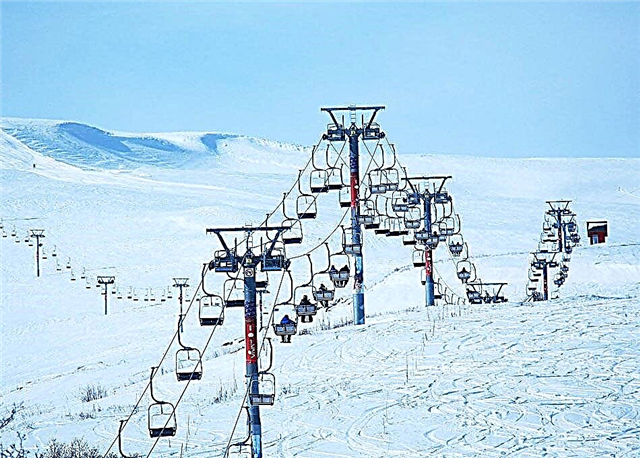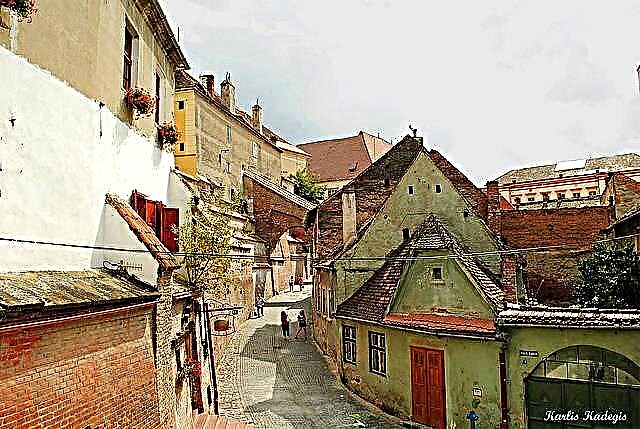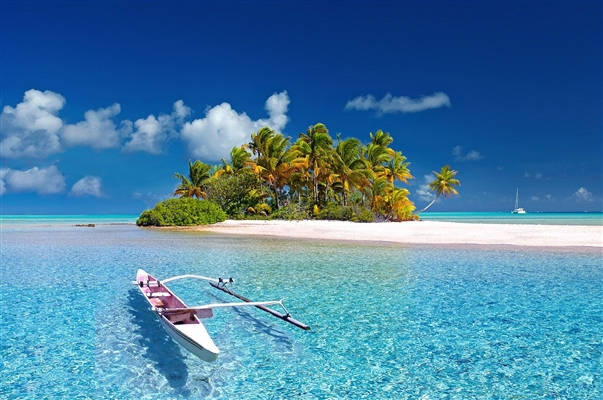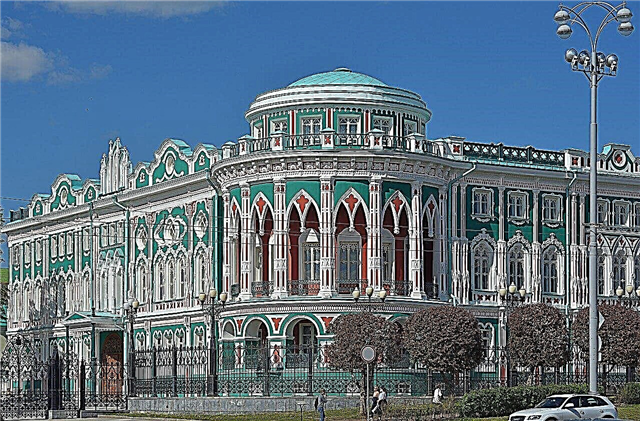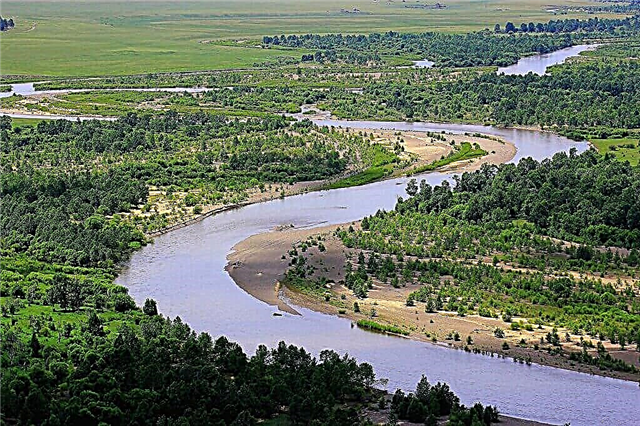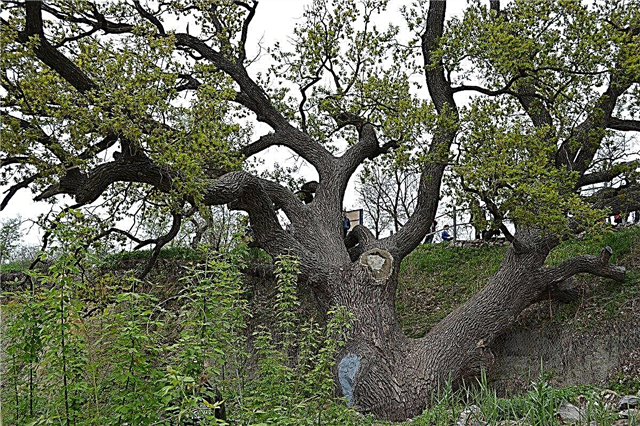Natural monuments of the Volgograd region are interesting not only for scientists from different areas, but also for travelers. At the same time, it will be difficult for uninitiated tourists without prompting to understand the true value of some objects. For example, Tulip Meadow and Chernichkin Garden look quite ordinary, if you do not take into account the importance of preserving rare plant species on their territory.
It is quite a different matter with a number of other natural attractions, which have features that are noticeable to the naked eye. So Dubov's "Oak-Patriarch" impresses with its beauty and size. Kamyshin mountains with the eloquent names "Ears" and "Lob" surprise with their appearance on the flat terrain. And the Arboretum of the Krasnoarmeisky District was built on lands that were considered unsuitable for growing trees.
Natural monuments of the Volgograd region
Alexander graben
The decree on the creation of a regional natural monument was signed in 2009. A unique object of its kind on the territory of the Volga region. Has a special scientific value. The geological outcrop covers an area of 16 hectares. The depth of the slot reaches 200 meters. The layers of the earth's crust began to "collapse" about 30 million years ago, and their movement ended several hundred years ago.

"Oak-patriarch" in Dubovka
The symbol of the city and a monument of federal significance. The height of the pedunculate oak is 18 meters, the girth of the trunk is 7 meters, and the age is over 230 years. Previously, it was believed that the tree is much older, but in 2015, studies were carried out that put an end to the controversy. During World War II, the oak was hit by 4 large fragments during an air attack. Traces from them still remain on the bark.

Kamyshin mountains "Ears" and "Lob"
The attraction belongs to specially protected natural areas and occupies 31 hectares. The status of a natural monument was secured in 2011. In the valley of the Kamyshinka River, two hills, called "Usha", are clearly visible from different sides. One and a half kilometers away from them there is an outlier "Shishanka", which is most often called "Forehead". The hills rise 30-40 meters above the surrounding surface. They are composed of massive slabs of hard quartz sandstone.

"Polunino"
The remains of ancient animals that lived here in the Cretaceous period were found on an area of 65 hectares in the Dubrovsky district. In order to preserve these valuable and rare fossil accumulations, a decree was signed in 2009 to create a natural monument of regional importance. "Polunino" is located at the mouth of the Luchiskin gully, a few kilometers from the settlement of the same name.

Tulip meadow
Located in the Nikolaevsky area. The area is 340 hectares. In 2010, the natural monument was created to preserve the unique natural complex: rare plants grow here, both by themselves and in combination. The main protected species is the Gesner tulip, which is why the meadow got this name. The settlement of Talovka, which is less than 4 kilometers away, can serve as a reference point when visiting an attraction.

Belyaevsky tulip meadow
The natural complex is located near the village of the same name and the Volgograd reservoir. The purpose of its creation in 2009 is to preserve the habitats of endangered, rare and valuable plants, including the Gesner tulip, which is listed in the Red Data Book of the region. The area of the natural monument is 74 hectares. Of the animals and birds, 10 species of mouse-like rodents and birds that hunt them are especially interesting for zoologists.

Great stone ravine
The geological section stretches for 10 kilometers and can be found on the right slope in the valley of the Medveditsa River. The ravine is interesting because it consists of layers of deposits of different geological eras. Some are about 300 million years old. The territory of 29 hectares was documented as a natural monument only in 2009. In the ravine, ancient representatives of flora and fauna were found in the form of fossils.

"Iris"
The natural complex got its name from the low iris - a perennial plant listed in the Red Data Book of the region. It grows on the right bank of the Don River in the Kalachevsky District. Since 2008, 340 hectares of these and adjacent lands have been considered a natural monument of regional importance. Irisovy attracts local residents as a place for active recreation. Beekeepers take out hives here, since the collected honey turns out to be especially fragrant.

Arboretum of the Krasnoarmeisky District in Volgograd
The natural monument of regional importance has an area of 3.5 hectares. The collection of plants exceeds 20 thousand species. The arboretum was created on clay soil, which was considered unsuitable for growing plants. The institution is self-sustaining. Visitors regularly come here as part of excursion groups of 10 people or more. In addition, the arboretum provides planting material for landscaping the area.

"Shemyakinskaya forest dacha"
The forest tract stretches over two beams with a total area of slightly less than 1000 hectares. The name is derived from the surname of the previous owner who won these lands in cards. A natural monument is characterized by the presence of ravines and a variety of fauna and flora. There are also freestanding massive oaks, which are more than 200 years old. This route is loved not only by hikers, but also by cyclists.

"Dolgova Padina"
Occupies 60 hectares in the Kletsky region. The natural massif of flats consists mainly of three types of trees: pedunculate oak, white willow and silver poplar. The bayrachny forest extends over most of the territory, the rest is steppe areas with forbs. The natural monument is located on the right bank of the Don River. The current status was given to Dolgova Padina in 2009.

"Cossack juniper"
Located within the boundaries of several districts of the Volgograd region at once. The area is 210 hectares. Since 2009 "Juniper Cossack" has been established as a regional natural monument. The name is derived from a plant growing in these areas. The natural complex is rich in flora species listed in the Red Book. Although livestock grazing and plowing are prohibited here, violations have not been completely eradicated.

"The tract" Big Kleshnya "
The status of a natural monument of regional significance was assigned to the tract in 2009. Its area is 234 hectares. The "Big Claw" also includes "Fox Meadow". Floodplain forests and meadows form a unique natural complex. There are endangered species of animals and plants listed in the Red Book of the Volgograd region. In addition to the Don River, the hydrological network is represented by 4 lakes.

"Chernichkin Garden"
The area of the natural monument is 85 hectares. This artificially created forest area is divided into several zones. Most of the territory is occupied by a ravine forest, 15% of the land is planted with fruit trees, 20% - with protective forest plantations. 4 plant species out of 30 found here are listed in the Red Data Books of the country and region. As the recreational load on Chernichkin Garden increases, the attraction suffers at the point of contact with the residential area.

Belogorsk Holy Trinity Kamennobrodsky Monastery
Year of foundation - 1860. Under Soviet rule, many buildings were destroyed and stables were built here. Restoration work is underway. The Holy Mountain is located near the monastery. There are monastery caves in it. Tours around the area can only be led by representatives of the monastery. The territory of 179 hectares became a natural monument in 2010. It also includes a partially preserved oak forest, the trees of which are more than 300 years old.



